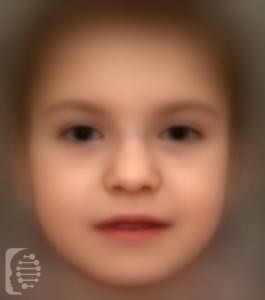What is CHARGE syndrome?
CHARGE syndrome is a genetic disorder that usually presents with a variety of birth defects.
The disorder is rare and not always easy to diagnose as symptoms may vary widely between individuals. Clinical criteria were established in 2005, the absence of a specific gene, responsible for the syndrome, for many years complicated the diagnosis.
CHARGE syndrome is characterized by symptoms that affect the central nervous system, as well as the eyes, nose, and ears.
Syndrome Synonyms:
Charge Association: Coloboma, Heart Anomaly, Choanal Atresia, Retardation, Genital And Ear Anomalies Hall-Hittner Syndrome; HHS Pagon’s syndrome.
What gene change causes CHARGE syndrome?
The syndrome is caused by mutations in the CHD7 gene. It is usually caused by a new mutation. A second gene. It is inherited in an autosomal dominant pattern.
In the case of autosomal dominant inheritance, just one parent is the carrier of the gene mutation, and they have a 50% chance of passing it onto each of their children. Syndromes inherited in an autosomal dominant inheritance are caused by just one copy of the gene mutation.
What are the main symptoms of CHARGE syndrome?
The main symptoms of the syndrome, and from which the syndrome derives its name, are:
- Coloboma: a slit in the iris or retina that may lead to vision loss
- Cranial nerve abnormalities: issues with the connection between the nose and throat
- Choanal Atresia: a blockage in the back of an individual’s nose that can make breathing difficult.
- Heart defects
- Genital abnormalities
Physical features of the syndrome include asymmetrical facial palsy, short and wide ears with little or no earlobe, small thumbs and fingers, and upper body hypotonia.
Other symptoms may include a cleft palate, issues with balance, kidney health concerns and intellectual disability. As well as, rhombencephalic abnormalities, hypothalamo-hypophyseal dysfunction, external/middle ear malformations, mediastinal visceral malformations, and mental retardation.
Possible clinical traits/features:
Dental malocclusion, Deep palmar crease, Delayed puberty, Malar flattening, Delayed eruption of teeth, Brachydactyly, Clinodactyly of the 5th finger, Broad columella, Chorioretinal coloboma, Anophthalmia, Cleft upper lip, Retinal detachment, Epicanthus, Split hand, Esophageal atresia, Cupped ear, Dandy-Walker malformation, Cryptorchidism, Dysphagia, Duodenal atresia, Downslanted palpebral fissures, Double outlet right ventricle, Facial palsy, Facial asymmetry, Feeding difficulties in infancy, External ear malformation, Posterior choanal atresia, Overfolded helix, Hand polydactyly, Nystagmus, Obsessive-compulsive behavior, Optic atrophy, Renal hypoplasia, Omphalocele, Preaxial hand polydactyly, Autosomal dominant inheritance, Parathyroid hypoplasia, Preauricular skin tag, Otitis media, Patent ductus arteriosus, Sinusitis, Retinal coloboma, Retinopathy, Renal agenesis, Webbed neck, Vesicoureteral reflux, Aplasia/Hypoplasia of the earlobes, Aplasia/Hypoplasia of the corpus callosum, Aplasia/Hypoplasia of the cerebellum.
How is it diagnosed?
To find out if someone has a diagnosis of CHARGE syndrome, it is important to have a consultation and evaluation with a clinical genetic specialist. Specialists may also suggest specific genetic testing or other types of tests to help reach a diagnosis. FDNA’s AI technology can help speed up the diagnostic process by analyzing facial features and other health information.

